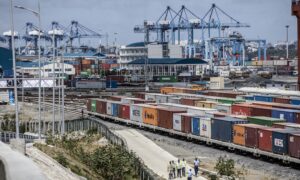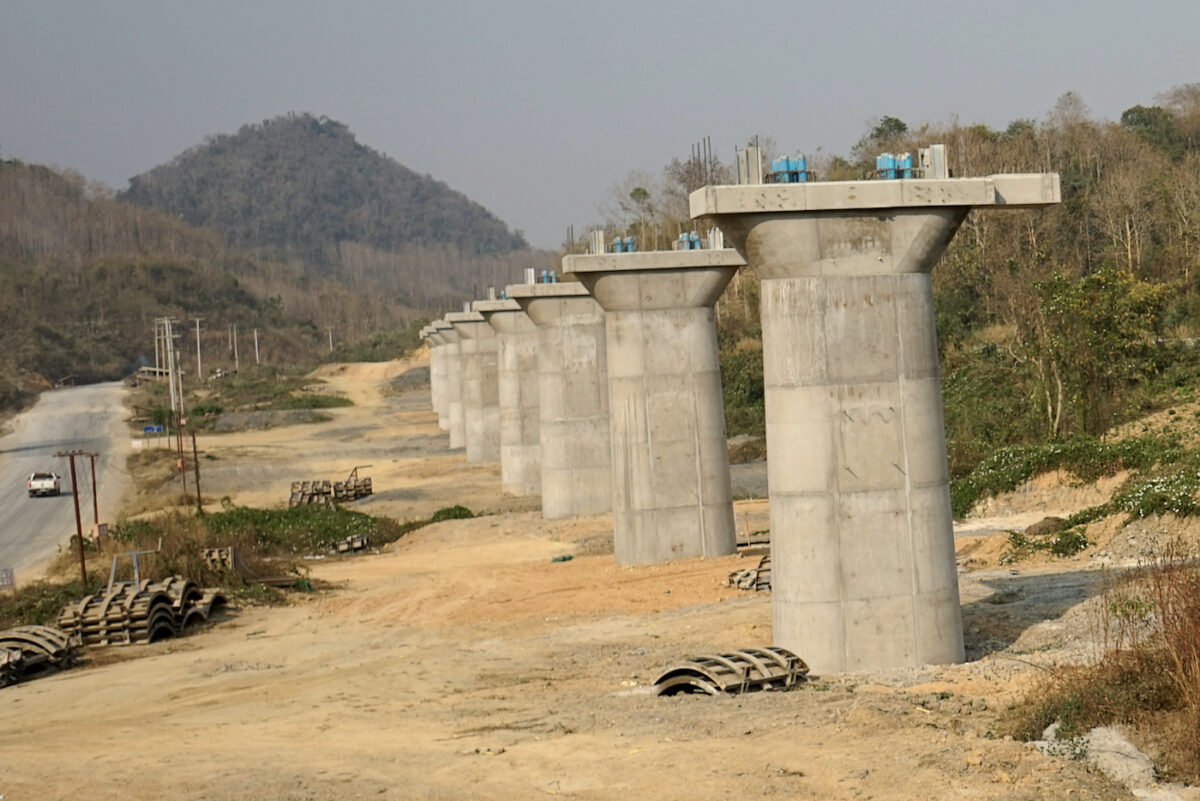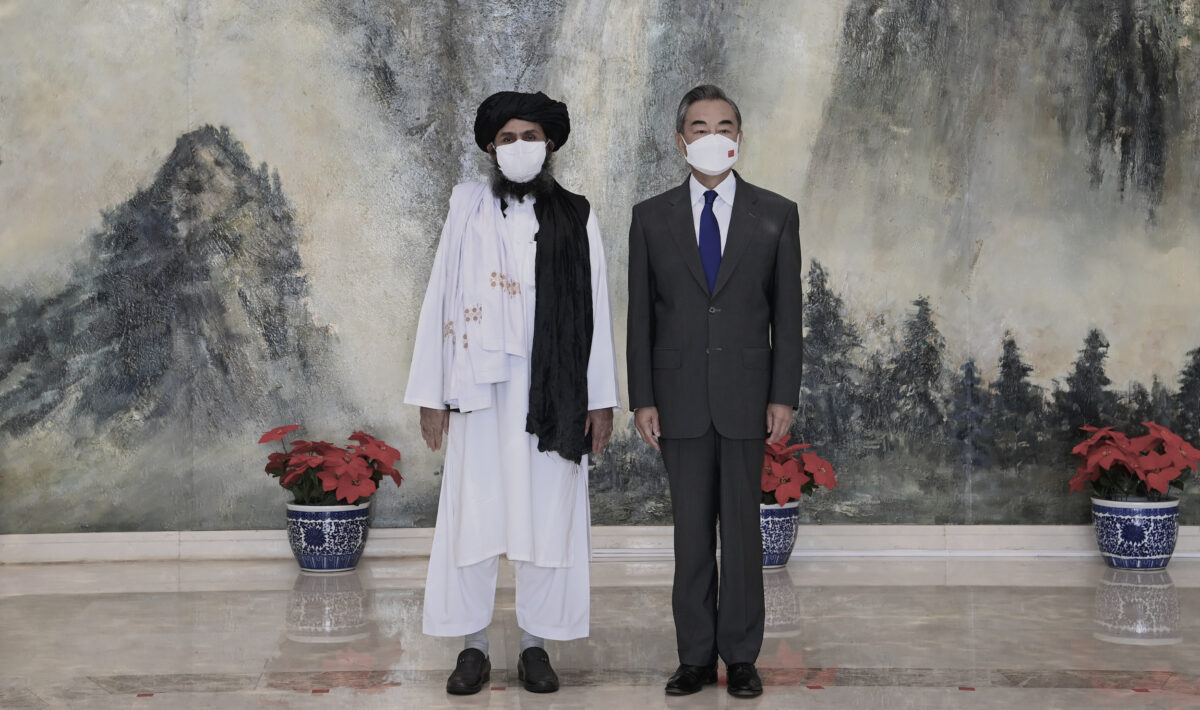China’s Belt and Road Investment Is Losing Steam
News AnalysisThe Chinese economy is flagging while Belt and Road Initiative (BRI) countries deal with debt and inflation. In the first half of 2022, China’s overall BRI investment slowed, with zero money flowing into Russia. Launched in 2013, the BRI (also known as “One Belt, One Road”) is Chinese leader Xi Jinping’s plan to expand China’s reach globally—with roads, maritime routes, telecommunications, computer grids, and banking networks that would run through most of the world’s countries. The basic BRI model is that China provides loans, often at high-interest rates, to countries to build infrastructure such as highways, power generation stations, railroads, and airports. Most of the construction work is carried out by Chinese companies using Chinese labor and raw materials. “We’ve seen the consequences when international infrastructure deals are corrupt and coercive,” U.S. Secretary of State Antony Blinken told a delegation in Pretoria, South Africa, in August while unveiling the White House’s new “Sub-Saharan Africa Strategy.” Economic Woes Chinese outbound investment peaked in 2016 and has been in decline since. In 2020, China was the world’s No. 2 outbound investor. In 2021, China slipped to fourth place behind the United States, Germany, and Japan. This year, facing inflation, unemployment, debt crisis, and the economic fallout of ongoing COVID-19 restrictions, Beijing and foreign investment banks have repeatedly cut China’s GDP growth projections. China is now focusing on attracting foreign investment, but it will be a hard sell. As interest rates are rising in the United States and declining in China, the United States is a more attractive destination for foreign direct investment (FDI) than China. China’s economic woes leave less funding for outbound investment as well. Chinese BRI investing in emerging markets has lagged far behind global FDI in emerging markets (excluding China). From 2020 to 2021, global FDI inflows into developing countries were up 40 percent, while Chinese BRI investment in those countries had decreased by 25 percent. This decrease in investment has been called for in China’s 14th Five-Year Plan for 2021 to 2025. So far, in 2022, total BRI financing has been $28.4 billion, a notable decrease from the $29.6 billion financed last year. A part of the first rail line linking China to Laos, a crucial part of Beijing’s Belt and Road project across the Mekong, in Luang Prabang, on Feb. 8, 2020. (Aidan Jones/AFP via Getty Images) BRI Spending Slows China’s investment in several countries—namely Russia, Egypt, and Sri Lanka—has fallen to zero. About 55 percent of China’s total BRI investment has been in the Middle East. The largest recipient of Chinese investment has been Saudi Arabia, which received $5.5 billion. This investment comes as the Chinese Communist Party (CCP) has renewed talks with the Kingdom to convince it to aid the yuan’s internationalization by settling oil trades in Chinese currency. These negotiations have been in process for nearly a decade, but so far, no agreement has been reached, and the dollar remains the global oil currency. Despite Beijing’s 2021 pledge to the United Nations General Assembly not to invest in overseas coal projects, China has invested in several fossil fuel projects in other countries, including Indonesia and some BRI countries, totaling 66 percent of its overseas construction contracts. At the same time, China’s investment in green and hydropower is down 22 percent. After the U.S. pullout from Afghanistan, there was much speculation that the CCP would swoop in, invest heavily, and benefit from mineral extraction, particularly from the world’s largest deposit of rare earth metals. Chinese officials have also repeatedly mentioned the possibility of expanding the BRI flagship project—the China-Pakistan Economic Corridor (CPEC)—to include Afghanistan. Apart from minerals, the CCP needs the Taliban’s help with security issues. Beijing has repeatedly asked Afghanistan not to provide sanctuary to the East Turkestan Islamic Movement (ETIM), which has allegedly committed terrorist attacks in China and Pakistan. Adding Afghanistan to CPEC and the promise of expanded BRI investment in Afghanistan could entice the Taliban to comply with the CCP’s wishes. However, despite promises of Afghanistan’s membership in the BRI, these investments have failed to materialize. Taliban co-founder Mullah Abdul Ghani Baradar (L) and Chinese Foreign Minister Wang Yi pose for a photo during their meeting in Tianjin, China, on July 28, 2021. (Li Ran/Xinhua via AP) The same problems that prevented the CCP from expanding its investments in Afghanistan last year still exist. These include operational and regulatory barriers, as well as security concerns. There is also a severe lack of infrastructure. Roads, processing plants, and mines would have to be built. Consequently, there have been no major Chinese investment projects in the country. Investment in

News Analysis
The Chinese economy is flagging while Belt and Road Initiative (BRI) countries deal with debt and inflation. In the first half of 2022, China’s overall BRI investment slowed, with zero money flowing into Russia.
Launched in 2013, the BRI (also known as “One Belt, One Road”) is Chinese leader Xi Jinping’s plan to expand China’s reach globally—with roads, maritime routes, telecommunications, computer grids, and banking networks that would run through most of the world’s countries.
The basic BRI model is that China provides loans, often at high-interest rates, to countries to build infrastructure such as highways, power generation stations, railroads, and airports. Most of the construction work is carried out by Chinese companies using Chinese labor and raw materials.
“We’ve seen the consequences when international infrastructure deals are corrupt and coercive,” U.S. Secretary of State Antony Blinken told a delegation in Pretoria, South Africa, in August while unveiling the White House’s new “Sub-Saharan Africa Strategy.”
Economic Woes
Chinese outbound investment peaked in 2016 and has been in decline since. In 2020, China was the world’s No. 2 outbound investor. In 2021, China slipped to fourth place behind the United States, Germany, and Japan. This year, facing inflation, unemployment, debt crisis, and the economic fallout of ongoing COVID-19 restrictions, Beijing and foreign investment banks have repeatedly cut China’s GDP growth projections.
China is now focusing on attracting foreign investment, but it will be a hard sell. As interest rates are rising in the United States and declining in China, the United States is a more attractive destination for foreign direct investment (FDI) than China.
China’s economic woes leave less funding for outbound investment as well. Chinese BRI investing in emerging markets has lagged far behind global FDI in emerging markets (excluding China). From 2020 to 2021, global FDI inflows into developing countries were up 40 percent, while Chinese BRI investment in those countries had decreased by 25 percent. This decrease in investment has been called for in China’s 14th Five-Year Plan for 2021 to 2025. So far, in 2022, total BRI financing has been $28.4 billion, a notable decrease from the $29.6 billion financed last year.

BRI Spending Slows
China’s investment in several countries—namely Russia, Egypt, and Sri Lanka—has fallen to zero. About 55 percent of China’s total BRI investment has been in the Middle East. The largest recipient of Chinese investment has been Saudi Arabia, which received $5.5 billion. This investment comes as the Chinese Communist Party (CCP) has renewed talks with the Kingdom to convince it to aid the yuan’s internationalization by settling oil trades in Chinese currency. These negotiations have been in process for nearly a decade, but so far, no agreement has been reached, and the dollar remains the global oil currency.
Despite Beijing’s 2021 pledge to the United Nations General Assembly not to invest in overseas coal projects, China has invested in several fossil fuel projects in other countries, including Indonesia and some BRI countries, totaling 66 percent of its overseas construction contracts. At the same time, China’s investment in green and hydropower is down 22 percent.
After the U.S. pullout from Afghanistan, there was much speculation that the CCP would swoop in, invest heavily, and benefit from mineral extraction, particularly from the world’s largest deposit of rare earth metals. Chinese officials have also repeatedly mentioned the possibility of expanding the BRI flagship project—the China-Pakistan Economic Corridor (CPEC)—to include Afghanistan.
Apart from minerals, the CCP needs the Taliban’s help with security issues. Beijing has repeatedly asked Afghanistan not to provide sanctuary to the East Turkestan Islamic Movement (ETIM), which has allegedly committed terrorist attacks in China and Pakistan. Adding Afghanistan to CPEC and the promise of expanded BRI investment in Afghanistan could entice the Taliban to comply with the CCP’s wishes. However, despite promises of Afghanistan’s membership in the BRI, these investments have failed to materialize.

The same problems that prevented the CCP from expanding its investments in Afghanistan last year still exist. These include operational and regulatory barriers, as well as security concerns. There is also a severe lack of infrastructure. Roads, processing plants, and mines would have to be built. Consequently, there have been no major Chinese investment projects in the country.
Investment in CPEC, the jewel of the BRI, has dropped by about 56 percent in the first half of 2022 compared to last year. AidData’s Chinese Development Finance Program found that 35 percent of BRI projects suffer from implementation problems, including corruption and labor violations. The organization also uncovered hidden debts where private companies in BRI countries receive loans from CCP-controlled entities, but the local government is the ultimate guarantor of the loan. Consequently, these loans are not added to the total debt owed to Beijing, even though the national government could wind up saddled with this additional debt burden.
In 2016, it looked like the BRI was set to gobble up most of the globe. Today, the outlook for the BRI’s progress is much more pessimistic. This could provide an opportunity for the U.S.-led G-7 BRI alternative—the Partnership for Global Infrastructure and Investment—to gain prominence.












